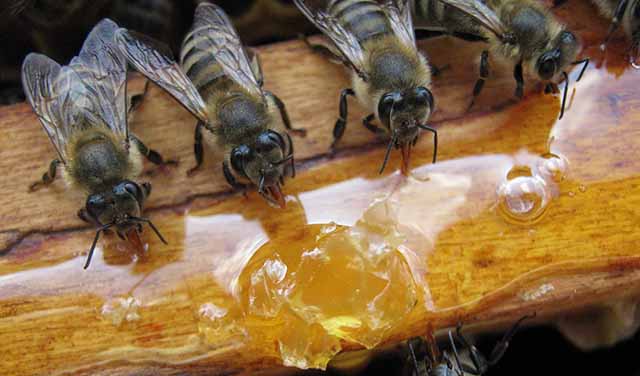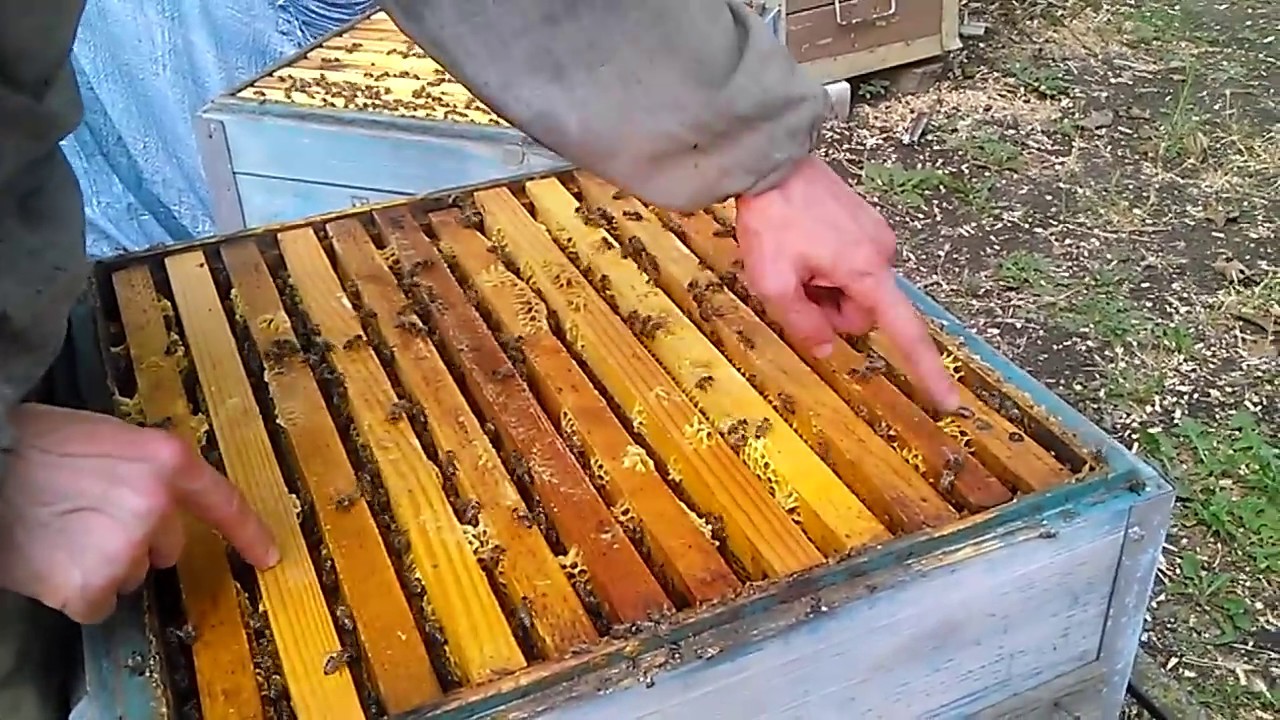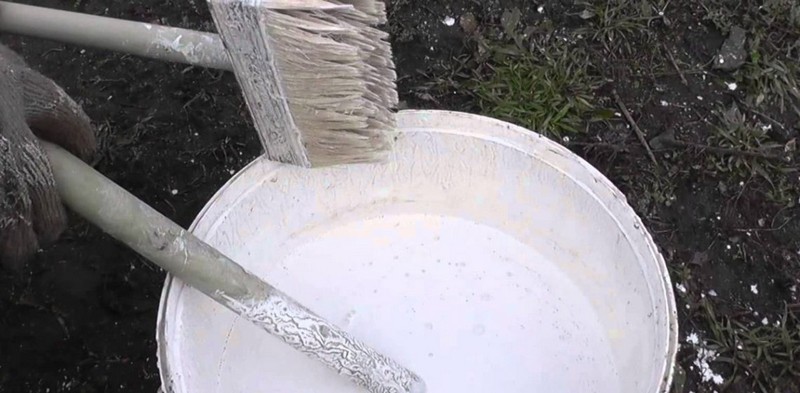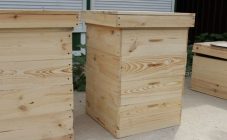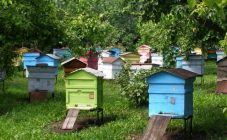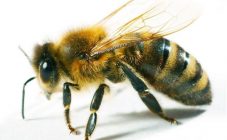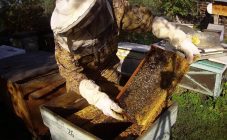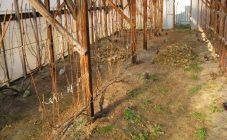Content:
The work of beekeepers in the apiary does not end with the arrival of autumn: they prepare the working apiary for the winter period, they need to form bee nests. To survive the long winter, the bee colony requires a certain amount of food. It is for this reason that all beekeepers should know how much honey to leave for bees for a harsh winter.
Why do bees need honey and how much
Many insects and insects hibernate during cold weather, but bees are active even in winter. For this reason, bees do not have the habit of storing nutrients for wintering. Therefore, the beekeeper needs to provide his pets with life-giving food for this time.
When there is a shortage of feed, bee colonies develop weaker, this can result in a decrease in productivity indicators in the season.
How much honey should be left for a comfortable wintering of bees?
All novice beekeepers are interested in the question of how many frames with honey to leave to bees for the winter. The amount of honey that is accumulated by winter depends on the chosen method of wintering bees.
There are 2 ways of wintering bees:
- Stay in a warm room if the wintering apiary is located in a room where the air temperature is kept at +2 degrees. In this scenario, the consumption of life-giving honey will be reduced to a minimum - up to 8 kg per one developed bee colony;
- Wintering in open spaces. If the bee hives are outside, then at an average temperature of -20 degrees one bee colony can eat up to 13 kg of a useful product.
All supplies must be placed on frames, one of which can hold up to 2.5 kg of honey. How many frames should be left in the hive for the winter? It depends on the wintering method, indoors you need about 3 frames, outdoors - up to 5 frames.
What honey to store for the winter
To be calm during the wintering of a bee colony, the beekeeper needs to accumulate a quality product. The selected variety does not matter, only heather and share types of honey should not be accumulated for the winter.
Working bees produce share honey when they cannot get enough life-giving nectar. During this period, insects instead of nectar use the juices secreted by mature trees. A person can consume this type of honey product, since it is safe for fragile health. But if labor bees consume a share product in large quantities, then there is a risk of death of valuable insects.
Especially detrimental to the health of worker bees are the remains of protein metabolism, which are contained in excess in this product. These components are the remains of the vital activity of aphids and other harmful pests. It is almost impossible to cleanse the share product from harmful impurities. Beekeepers determine the presence of solids in the product using special reagents:
- The acetic-lead method of determination is the most correct. It detects share impurities with an accuracy of 100%;
- Simple alcohol analysis, but there is little accuracy in this method. Often, positive results in alcohol analysis are obtained for buckwheat honey;
- Lime analysis is used on an ongoing basis. For this purpose, a small amount of quicklime is poured with purified water. The settled liquid is drained from the resulting solution.It is also a reagent for identifying solids in bee products.
Heather honey product does not pose any danger to the life of bees, but over time it thickens strongly, so it becomes more difficult for insects to consume it for food. The comfort of wintering depends not only on the amount of accumulated honey in the hive, but also on the quality of the selected product. Beekeepers decide to leave the light honey product for the winter period of the bee colony, since the content of indigestible components is much higher in dark varieties. Such species are poorly assimilated by labor bees.
How many frames do bees hibernate?
Any novice beekeeper is interested in the question of how many honey frames the bees should hibernate in order for them to winter comfortably and without losses. After leaving the required amount of life-giving product, the beekeeper takes care of correctly distributing the feed on the frames.
A honeycomb of a light brown hue is chosen as a raw material for blanks; it was in this environment that the largest number of bees appeared. Frames with dark honeycombs are not suitable for winter harvesting, they contain the remains of embryonic bees that remain from last year's production.
Depending on the design of the hive, feed placement in frame units is quick and easy. The selection of the honey product from the multi-body hive from the first building is carried out in full, from the second - only half. The remaining unfilled frames are moved to the middle. If the hive already has 12 frames, then it is necessary to organize a system for storing winter supplies. To this end, an additional building is being built with two empty stores, where honey frames will be located. After full filling with honey, they are sent for storage until autumn.
There are times when it is not possible to prepare food for the working bees, in which case the beekeepers use various feeding. They begin to introduce complementary foods after the end of the bribe, in this case, the introduction of feeding can negatively affect the health of the bees, which will lead to a decrease in seasonal productivity.
Sugar syrup is suitable as a raw material for feeding, its consistency is medium: not too thick and not too liquid. It is necessary to give the prepared syrup at night, before that the composition is heated. Nutrient composition is introduced in dosage, 1 glass per week. Insects consume up to 25% of the added sugar, when feeding 1.5 kg of ready-made syrup, the hive will produce 1 kg of pure honey. All these simple actions will help the bee community easily and comfortably survive the harsh winter.
